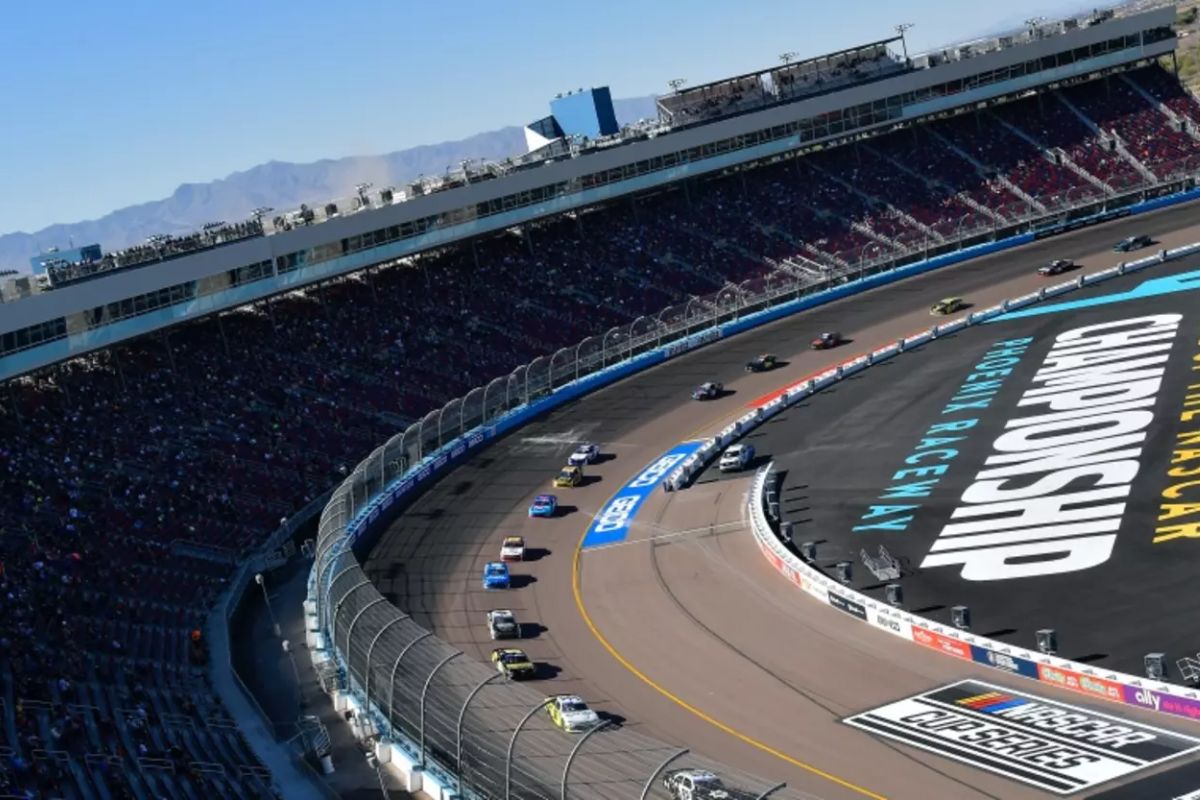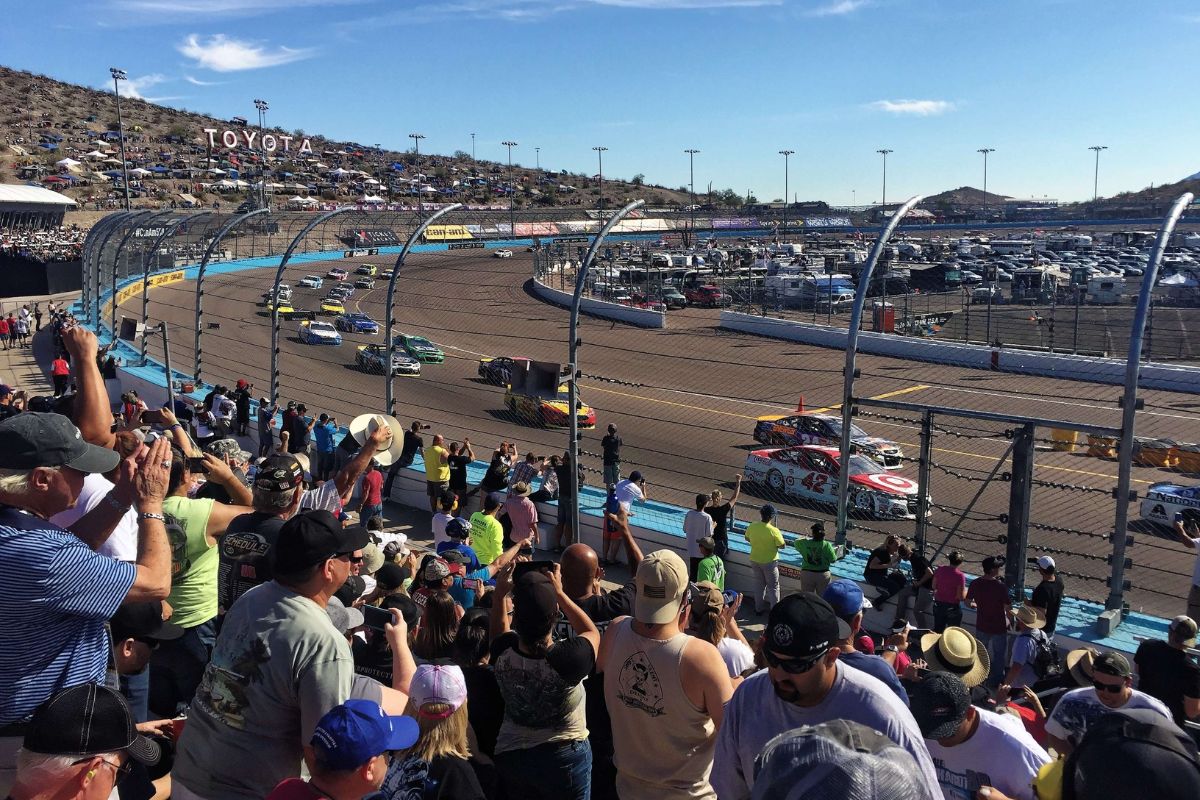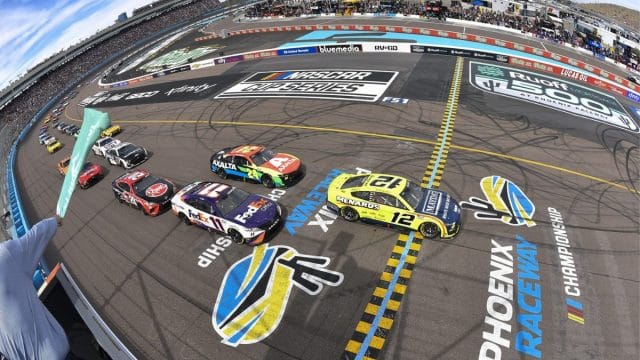NASCAR’s Phoenix Short Track Package: The recent introduction of NASCAR’s Phoenix Short Track Package has sparked considerable interest and speculation within the racing community. As teams and drivers adapt to the new regulations, the potential implications on the race dynamics and strategies have become a focal point of discussion.
The impact of these changes on performance and competition is yet to be fully realized, leaving fans and experts eager to witness how this shift will unfold on the track. The upcoming race at the Phoenix Raceway promises to offer a glimpse into the future of NASCAR racing under this new package, setting the stage for an intriguing and potentially game changing event.
NASCAR’s New Short Track Package Testing at Phoenix Raceway
NASCAR’s decision to conduct testing of its new short track package at the Phoenix Raceway signifies a pivotal moment in the sport’s evolution. Concerns over the Next-Gen car’s performance on shorter tracks have prompted a thorough exploration of potential improvements for post-2023 races. Driver feedback becomes paramount in this testing phase. Their insights on handling improvements, speed adjustments, and aerodynamic changes will heavily influence the development of the new package.
The focus on enhancing handling, adjusting speeds, and refining aerodynamics aims to address the challenges faced by the drivers on short tracks, ensuring competitive and exciting races for fans. Driver feedback on these aspects will be crucial in fine-tuning the package to optimize performance and improve overall racing quality. The anticipation of fan reactions to the changes being tested at the Phoenix Raceway adds an additional layer of significance to this testing phase. NASCAR looks to strike a balance between enhancing competition and maintaining the essence of short track racing.

Details of the New Package and Testing
The recent testing conducted at the Phoenix Raceway unveiled a new short track package designed to enhance maneuverability and performance for Cup Series drivers. The changes aim to provide enhanced handling through aerodynamic adjustments, as highlighted by NASCAR insider Steve Letarte.
- Aerodynamic Changes: The focus is on tweaking downforce by modifying the underwing, floor, and rear diffuser of the car to improve handling capabilities.
- Driver Feedback: Feedback from drivers like Ryan Blaney, Christopher Bell, and Kyle Larson has been positive during initial testing, indicating potential performance improvements.
- Increased Competition: The adjustments are expected to bring a higher level of competition on short tracks, as drivers will have better control over their cars.
- Performance Improvements: While the changes do not involve increasing horsepower, the goal is to optimize the cars for better maneuverability and overall performance on the track.
NASCAR’s Continued Efforts and Future Considerations
Continuing to navigate the complexities of short track racing, NASCAR remains steadfast in its commitment to refining performance dynamics for the drivers and optimizing competition levels on these challenging courses. The future improvements in NASCAR’s short track racing heavily rely on the driver feedback to fine-tune the package effectiveness. While the recent changes show promise, there is acknowledgment that more work is needed to address the track challenges presented by shorter ovals.
The Next-Gen car’s struggles on tracks under a mile pose a significant obstacle that NASCAR is actively working to overcome. Although Phoenix provides valuable insights, it is crucial to assess the package’s performance at traditional short tracks like Martinsville, Bristol, and Richmond to gauge its true effectiveness. The feedback from drivers racing on these tracks will be instrumental in shaping the future direction of NASCAR’s short track racing initiatives. NASCAR’s dedication to continuous improvement in this area highlights its commitment to enhancing the quality of competition for both the drivers and fans.
Preview of the Race
How will the new package impact the strategies and performance of the drivers as they take on the challenge of the upcoming race in Phoenix? The upcoming race in Phoenix offers a unique blend of excitement and uncertainty due to the introduction of the new package. Here’s a preview of what to expect:
- Driver strategies: With the new package altering the dynamics of the race, drivers will need to adapt their strategies to maximize performance on the track.
- Track conditions: The impact of the package on the track conditions remains to be seen, with drivers and teams needing to quickly assess and adjust to the changing environment.
- Fan expectations: Fans are eagerly anticipating how the new package will shake up the competition, hoping for thrilling battles and unexpected outcomes that showcase the full potential of the changes.
- Potential surprises: The unpredictable nature of NASCAR could lead to surprising upsets or standout performances, adding an extra layer of excitement to the race.
- Championship implications: As drivers compete for crucial points in the championship race, the outcome of the Phoenix race could have significant implications for the title contenders.

News in Brief
NASCAR’s Phoenix Short Track Package has stirred anticipation, sparking discussions on its impact. The upcoming race at Phoenix Raceway serves as a testing ground for this innovation, aiming to enhance maneuverability and competition. NASCAR’s focus on driver feedback underscores its commitment to refining the package for short tracks, addressing challenges without increasing horsepower. Recent testing at Phoenix revealed positive feedback from drivers like Ryan Blaney, Christopher Bell, and Kyle Larson, signaling potential performance improvements. The changes aim to elevate competition levels on short tracks, optimizing handling without compromising speed. As NASCAR navigates these improvements, the Phoenix race preview highlights the intrigue surrounding driver strategies, track conditions, fan expectations, potential surprises, and championship implications in this evolving short track landscape.
Our Reader’s Queries
Q. What does NASCAR consider a short track?
A. Short tracks, measuring less than 1 mile, include Martinsville Speedway (.526 miles), Bristol Motor Speedway (.533 miles), and Richmond Raceway (.75 miles) in the Cup Series.
Q. How long is the NASCAR track at Phoenix?
A. Phoenix Raceway spans 1 mile, and the upcoming race requires 312 laps for a total distance of 312 miles.
Q. What is a NASCAR road course?
A. Road racing, a form of motorsport, occurs on cleared street surfaces. These races transpire on either closed circuits or road circuits utilizing closed public streets. In the beginning, road races primarily unfolded on open streets.
